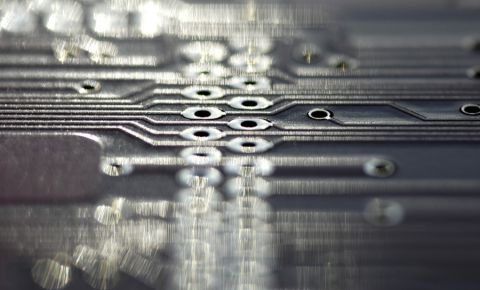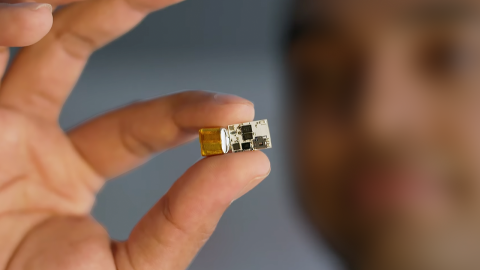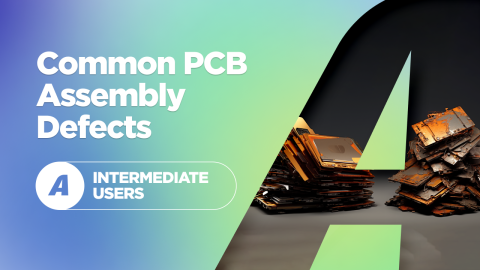PCB Manufacturing Cost Drivers and Designing to Cost

Whenever I’ve engaged with a startup client that wants to understand board design and manufacturing costs, they often get surprised when I tell them the major PCB cost drivers and start giving some ballpark estimates. For a startup hardware company, or even a major enterprise that does not normally engage in electronics manufacturing, the numbers can be surprising, especially for low-volume runs. There is this perception that electronics production is extremely cheap, so why should someone have to pay large sums for a short run of new boards?
PCB cost drivers are not so simple and come with some fixed up-front costs, as well as component costs and fabrication costs which can quickly scale to high numbers for innovative new products. Any company that wants to producec at scale should understand these cost drivers so that a team can decide the important up-front design decisions, make smart choices around components, and properly plan for fab and assembly.
Major PCB Cost Drivers
The major PCB cost drivers are quite simple and fall into three different areas:
- Panel fabrication costs. Remember, PCB fabricators do not produce individual boards; they produce panels from which they cut out your finished boards. The per-panel cost include materials, labor, processing (plating and drilling, etc.), and lead time.
- Assembly costs. Each board needs to be assembled, and costs for assembly can be comparable to fabrication costs for more complex boards, and assembly costs can even exceed fabrication at lower volumes with high component count.
- Component costs. This is a major cost driver for a finished PCB, and going to higher volume does not create the same price drop as increasing panel count. Overage requirements to account for attrition also need to be included.
You can read more about each of these areas are how they can be used to formulate a PCB cost estimate in this article.
Notice that everything in the above list is centered around fabrication; I didn’t include design costs, enclosure costs, shipping and logistics… the list goes on. I also didn’t include NRE, inspection, and any other fixed costs required to put a new design into production. This is because design and NRE costs, while significant in some cases, are fixed and are amortized across a design’s lifetime and manufacturing volume. At high manufacturing volumes, these fixed costs become only a small fraction of the total cost to take a new product to market.
Service level: Consigned or Full Turnkey?
One of the reasons buyers often request quotes is to obtain a full turnkey assembly option. Rather than handling sourcing for parts themselves, buyers will ask the assembler to handle sourcing for the components that will be used in the assembly. The other option is consigned assembly, where the PCBA buyer also purchases the components from a distributor, and the components are kitted and shipped to the assembler.
Full turnkey makes almost perfect sense in many instances, such as when a buyer does not procure parts very often or they do not keep inventory of components. Assemblers often have credit with favorable terms with component vendors, or they can bundle orders together and get volume discounts. While these factors are true, it does not always translate into a lower component cost for the customer. In reality, PCB assemblers will apply a markup on the components when you request a full turnkey service level. These markups can be quite large, and I have seen markups exceeding 100% from some assemblers.
In contrast, consigned assembly eliminates the markup for a full turnkey service, but the buyer or the engineering team must take on the task of ordering components and having them shipped to the assembler. The consigned components must include some attrition level in the order, which I discuss more below. If attrition levels are not met, or a part number is omitted, or a package from one of your distributors is delayed, then your assembly order will be delayed.
Parts Attrition
This is one of the most common reasons a PCB buyer will misquote the cost of PCB assembly. When quoting the component portion of the PCB assembly cost, the buyer must include some additional components to account for parts attrition. There are several reasons for parts attrition during PCB assembly:
- Additional parts to account for rework
- Additional reel length for SMT feeders
- Possibility that some parts are damaged or lost during assembly
- Overage to account for any mishandled parts in a kit
There is no single number that every assembler uses for attrition. Required attrition amounts can vary by package size, package type (leaded or leadless), and batch size. Through-hole components typically have lower required overage for attrition, particularly larger connectors or mechanical parts. For larger expensive parts, such as large FPGAs or connectors, assemblers often provide leniency on the attrition requirements, but failing to include overage for all other parts will delay the assembly process until all the required parts including overage are received.
Quick Ways to Estimate Cost With Attrition
Whether producing locally or overseas, there are many companies that offer online quote tools which can be used to get a rough estimate of the cost you could expect for the board and assembly. There is no universal quoting calculator, and quotes are only ever finalized after your manufacturer reviews and approves the design files. This also applies to full turnkey bills due to the attrition requirements and assembler's markup, which I detailed above.
For components, it is possible to get a highly accurate component cost as long as the attrition requirements are known. To get an accurate estimate of parts cost, there are two excellent options:
- For non-Altium users, use the BOM tool in Octopart
- For Altium Designer users, use the BOM Portal app in Altium 365
Both tools aggregate parts inventory and cost information across distributors and can read parts data directly from an Excel export of your BOM.
The Design to Cost Challenge
Focusing on smart design and manufacturing planning in the three areas listed helps you design to cost. Unfortunately, focusing on design to cost might mean giving up something in design and manufacturing. This can mean sacrificing some features, using alternative components you’ve never used before, forcing yourself into a less complex PCB, or shrinking board size.
In designing to meet a target per-board cost, I find it’s best to focus in two areas: component selection and fabrication. There is not much you can do for assembly except to reduce component count or increase your order quantity/lead time, so this becomes a component selection and fabrication problem. Let’s look at these two PCB cost drivers more closely to see where we can try to get designs to a desired price point.
An LPTA Process for Component Selection
You can take a “lowest priced, technically acceptable” approach to component selection whenever cost is a concern. There are certain components like ICs my team likes to work with and we’ll present these options to customers when price is not such a major factor. However, when cost is one of the main considerations, the first place to start with getting to a low cost is component selection.

Streamlining assembly, procurement, and cost requires selecting a group of candidate components with the same or very similar footprint. For many components (e.g., transistors or semiconductors), this is pretty easy as so many footprints are standardized. However, many ICs do not have interchangeable pinouts and you may fall victim to limited stocks on many components. Once you have narrowed down to candidate components, you can use an LPTA process to settle on particular components to meet production costs:
- Group candidate components into acceptable and unacceptable groups. Don’t be afraid to include higher-end components in the same product line as long as they have the same package/pinout.
- Sort the list of acceptable components by lowest price.
- Select the lowest priced acceptable components first as long as there are sufficient stocks to cover production volume.
There is also the matter of component volume. For passives and other simple components, you may want to compromise and pay an extra half cent per part when there is sufficient volume with distributors. This reduces some procurement headaches and helps simplify your BOM. For ICs, you won’t always have the same luxury and you may need to compromise with design variants that include alternative, technically acceptable ICs to reach your target volume.
Component Packages Drive Assembly Cost
Component packaging can also drive costs in assembly. In particular, leadless parts will be a cost driver of PCB assembly due to the need for additional inspection and NRE for these parts. Leadless parts are prone to solder defects (just like all other parts), but they cannot be inspected with AOI and instead require X-ray inspection. Some of the component packages that can bring additional assembly costs are:
- Ball grid array (BGA) packages
- Land grid array (LGA) packages
- Quad flat no-leads (QFN) packages
- Other flat no-leads packages (DFN, DRMLF, etc.)
For some parts, you won't have a choice but to use QFNs or similar no-leads packages as the manufacturer might not make them available in other package types.

Although QFNs, BGAs, and LGAs carry some extra costs, they offer important advantages of space savings as they tend to be smaller packages. They also tend to have die-attached pads for grounding and heat transfer into the interior of the PCB (see the QFN graphic in the above image). Consider these points before swapping to an alternative package (usually SOIC) which might take up more space.
Fabrication and Assembly Volume
One important part of getting per-board costs reduced is to simplify the board. Fewer layers, larger drill hole sizes, fewer drill holes, wider traces, and smaller boards (= more boards per panel) will help bring down fabrication costs. However, there is only so much you can do here without sacrificing product quality and functionality.
Even after you’ve minimized component costs and simplified your board, you might find that your costs per assembled board are still too high to meet your target price point. At this point, you may need to accept a higher fabrication volume and/or longer lead times. Going with higher volume requires rethinking business strategy and delivery schedules, but it might be the only way you can get down to a sufficiently low price for your product.
Obviously, getting to low per-board costs is a complex endeavor, and designers need the right PCB design applications to help them minimize costs. Once you’re familiar with the primary PCB cost drivers, you can start planning your design, manufacturing volume, and delivery schedule for your new product. Altium Designer® includes the industry’s best design tools alongside the Manufacturer Part Search panel to help you design to cost and find components that will help you stay within your budget.
In addition to design tools, Altium provides all its users with access to the Altium 365™ platform, making it easy to collaborate with other PCB designers throughout the project lifecycle. We have only scratched the surface of what is possible to do with Altium Designer on Altium 365. You can check the product page for a more in-depth feature description or one of the On-Demand Webinars.











